#Iberian History
Text
Time Travel Question 48: Early Modernish and Earlier 3
These Questions are the result of suggestions a the previous iteration.This category may include suggestions made too late to fall into the correct earlier time grouping. In some cases a culture lasted a really long time and I grouped them by whether it was likely the later or earlier grouping made the most sense with the information I had. (Invention ofs tend to fall in an earlier grouping if it's still open. Ones that imply height of or just before something tend to get grouped later, but not always. Sometimes I'll split two different things from the same culture into different polls because they involve separate research goals or the like).
Please add new suggestions below if you have them for future consideration. All cultures and time periods welcome.
#Time Travel#Paracelsus#Early Modern#Precolonization#Indigenous Cultures#Aphra Behn#Il Sodoma#Art History#Theater History#Espionage#The Man in the Iron Mask#Yellowstone#Indigenous History#18th Century#17th Century#Serial Killer#Nursery Rhymes#Nanny of the Maroons#Escaped Slaves#Jamaica#1600s#1700s#Caribbean History#Black Women's History#Black History#Women's History#Ediacaran Era#Neoproterozoic Era#Ancient Iberian Cultures#Iberian History
61 notes
·
View notes
Photo








→ history + maría pérez la balteira
requested by anonymous
María Pérez Balteira is the best known of the medieval soldaderas and, of course, the main female character in galician-portuguese medieval lyric poetry. Contemporary troubadours, secularists and minstrels made her the target of their collective jokes. Jokes that were recorded in the medieval songbooks and which were considered as they were, without separating or omitting any words in their proper measure, many of them being exaggerated expressions. — Joaquim Ventura, O contrato de María Pérez Balteira con Sobrado
#historyedit#maría pérez la balteira#iberian history#galician history#women in history#medieval history#middle ages#13th century#*mine#*history#wtf is this#i'm sorry anon this looks awful
131 notes
·
View notes
Text
BERMUDO II
THE GOUTY
King of León
(born c. 953 - died 999)

pictured above is an imagined portrait of the King of León, by Gerónimo Fresno from 1851
-------------------- ~ -------------------- ~ --------------------
SERIES - Descendants of the Kings of Asturias: Bermudo was a great-great-grandson of Alfonsu III, one of the last Kings of Asturias from 866. Also, his great-grandfather Ordoñu II, King of León is considered to have been King of Asturias from 914, though he kept his base at León.
-------------------- ~ -------------------- ~ --------------------
BERMUDO was born around 953, at an unknown location in the Kingdom of León. His father was Ordoño III, King of León but his mother's identity is uncertain. To this day his origins are a mistery as it is not certain if he was born legitimate or illegitimate.
Some sources that consider him to have been legitimate believe that his mother was his father's recorded wife Urraca Fernández.
Though other sources believe that he was born during the period in which his father was separated from Urraca. So, to support his legitimacy they believe that his father could have married another unrecorded woman.
And another theory is that his mother was a mistress of his father, a certain Elvira.
He was a member of the Ordóñez Dynasty branch of the ASTUR-LEONESE DYNASTY, either from the legitimate or an illegitimate line.
His name was BERMUDO ORDÓÑEZ and as his legitimacy is not certain it is not known if he was considered an INFANTE OF LEÓN from birth.
Nothing is known of his early life, except that when his father died in 956 his half-uncle inherited the throne as King Sancho I. And it is believed that he lived at the Leonese court during the reign of his first cousin King Ramiro III, who inherited the throne in 966.
Probably before 981 he married a certain VELASQUITA, of uncertain origins, and they possibly had one daughter (check below). Sources diverge on who could have been her father, but as it is widely believed that her name was Velasquita Ramírez she could have been of Galician nobility as one of the daughters of Ramiro Menendiz and Adosinda Guterres.
There are also sources that believe that his wife could have been an unrecorded daughter of a previous Monarch of León, but these theories cannot be proven. These sources say that she could have been a daughter of either:
King Ordoño IV and most certainly his recorded wife Urraca Fernández (one of the womans believed to be the mother of Bermudo, so if this theory is correct Bermudo's mother must be another woman);
King Ramiro II and probably one of his wife's, either Adosinda Gutiérrez or Urraka Santxitz of Pamplona; or
King Ramiro III and his wife Sancha Gómez.
Also, another source suggests that his wife was one of the daughters of García Fernández, Count of Castile and Ava of Ribagorza.
It is believed that he married Velasquita before 981 because around 981-82 he was proclaimed and crowned as a rival KING OF GALICIA, by the nobility of Galicia and Portugal that was unsatisfied with the government of his cousin King Ramiro III.
His proclamation led to war between Galicia-Portugal and Castile-León, and the Kingdom of León was divided in two factions until the death of King Ramiro II in 985.
After his cousin died he succeeded as BERMUDO II, KING OF LEÓN, possibly because his cousin did not have legitimate heirs.
However peace between the two factions was not immediately achieved and he relied on the protection of the Caliphate of Córdoba, leaving to more dissatisfaction amongst the nobility over the next years. And over the years he also had to fight Muslim invaders.
Some sources believe that he repudiated his wife after Christmas Eve of 988, because that was the last time she was mentioned in a chart.
By 991 he married for a second time to ELVIRA, of Castilian nobility, and they possibly had four children (check the list below). She was one of the daughters of García Fernández, Count of Castile and Ava of Ribagorza, and according to some sources a sister of his first wife. He also had many illegitimate children.
At the end of his life his gout got worse and the King of León died in 999, at El Bierzo. He was probably in his fourties.
-------------------- ~ -------------------- ~ --------------------
Following his death he was succeeded by his eldest legitimate son as King Alfonso V. However as his son was aged around five, his second wife Elvira and her brother Sancho García, Count of Castile tried to govern the Kingdom of León.
-------------------- ~ -------------------- ~ --------------------
BERMUDO II had one child with a certain VELASQUITA... either his first wife or a mistress...
Cristina Bermúdez - wife of Ordoño Ramírez.
With his second wife ELVIRA he may have had four children...
Sancha Bermúdez - a nun;
Teresa Bermúdez - possible wife of Abdullah, King of Toledo or Almnswr bin Aby Eamr;
Alfonso V, King of León - husband first of Elvira Méndez and second of Urraka Gartzeitz of Pamplona; and
possibly Elvira Bermúdez - probably married.
And he had many illegitimate children...
Pelayo Bermúdez - probably unmarried;
Ordoño Bermúdez - husband of Fronilde Peláez;
Bermudo Bermúdez - probably unmarried;
Piniolo Bermúdez - probably unmarried;
Elvira Bermúdez - possible wife of Nuño García;
Sancha Bermúdez - probably married.
It is not certain if Elvira was her daughter or an illegitimate offspring of her husband.
After King Bermudo II died in 999, Elvira may have acted as Regent for her son King Alfonso V with the support of her brother Sancho García, Count of Castile, although the real power was exercised by Mendo Gundisalviz, Count of Portugal.
By the mid 1010s her influence over her son may have decrease and she died in 1017, in an unknown location.
-------------------- ~ -------------------- ~ --------------------
Check my posts on BERMUDO II's family, his Royal House and his connections to the Kings of Asturias!
He was born a member of the Ordóñez Dynasty branch line of the Astur-Leonese Dynasty.
In a span of five generations, ORDOÑO III was related to the Kings of Asturias through his father…
His father was Ordoño III, King of León.
His grandfather was Ramiro II, King of León.
His great-grandfather was Ordoñu II, King of León - possibly the King of Asturias between 914-24.
His 2x-great-grandfather was Alfonsu III, King of Asturias - the King of Asturias between 866-910.
#bermudo ii#king of león#middle ages#medieval spain#medieval europe#astur leonese dynasty#royals#royalty#monarchy#monarchies#asturian royalty#spanish royals#royal history#asturian history#spanish history#iberian history#european history#world history#history#reconquista#10th century#history with laura
4 notes
·
View notes
Text
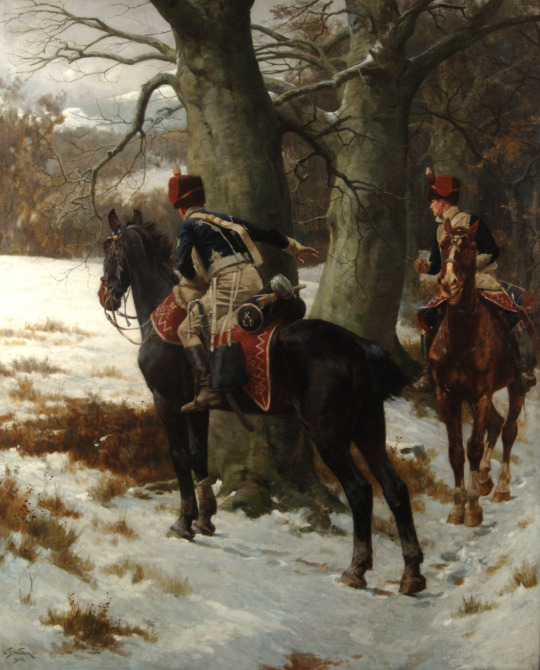
The Scouts (A patrol of the 10th Light Dragoons, Peninsular War)
by William Barnes Wollen
#william barnes wollen#art#peninsular war#napoleonic wars#scouts#dragoons#hussars#great britain#britain#england#british#english#cavalry#history#spain#europe#european#dragoon#hussar#napoleonic#royal hussars#royal#iberian peninsula
215 notes
·
View notes
Photo

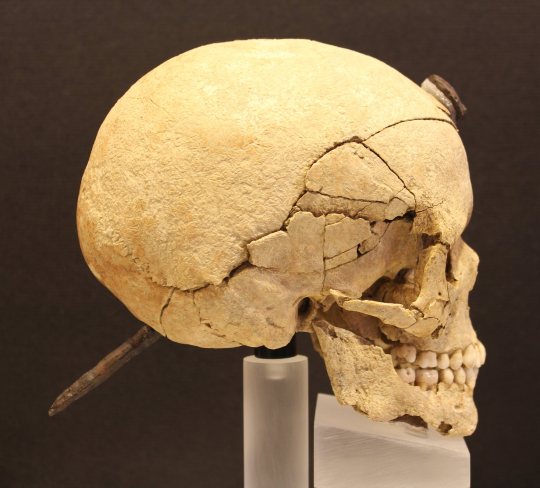
In various cities of the Ancient Iberians (Ancient Iberians were the indigenous cultures that lived in the Eastern coast of the Iberian peninsula before they got conquered by the Roman empire), archaeologists have often found skulls perforated by a nail. All of them have been found in the cities located in what nowadays is the Northern half of Catalonia (Ancient Iberian cultures, though related to each other, varied a lot area to area).
These are believed to be the skulls of their enemies, who were captured and beheaded. The enemy’s heads were nailed to the city walls or above the entrance door to houses, together with their weapons. Most of these heads belonged to individuals of the male sex, though some are female and a few belonged to children.
The Ancient Iberian language hasn’t been deciphered and their contemporaries didn’t write much about them, thus many aspects of their culture aren’t known for certain. Archaeologists have the hypothesis that this practice could be related to the way Celts exhibited the heads and hands of their enemies as war trophies, or related to a belief present in the ancient Mediterranean according to which cutting someone’s head off stopped them from reaching immortality. The Gauls even passed down the beheaded heads of their enemies to their children, as a prized possession that brought prestige. It’s a possibility that Northern Iberians were in touch with this practice.
Photos from the Ancient Iberian site Ullastret (Comarques Gironines, Catalonia) posted on National Geographic. Information from Rovirà i Hortalà, 1998 and MAC Ullastret.
#història#arqueologia#ullastret#catalunya#ancient iberians#antiquity#ancient history#ancient#archaeology#archeology#protohistory#war history#historical#historical artifacts#artifacts#anthropology#bones#european history#europe
117 notes
·
View notes
Text

Luis de Madrazo y Kuntz (Spanish, 1825-1897)
Don Pelayo, rey de Asturias, c.1853-56
Museo Nacional del Prado, Madrid, Spain
#Luis de Madrazo y Kuntz#spanish art#spanish#1800s#art#fine art#european art#classical art#europe#european#fine arts#europa#mediterranean#western civilization#world history#european history#classical#oil painting#don pelayo#king pelayo#king of asturias#asturias spain#spain#iberia#iberos#iberian#germanic tribes#gauls#vandals
46 notes
·
View notes
Text

(+ rough sketches)

Celtiberia OC!!
#hetalia#hws celtiberia#i love ancient iberian history smmmm#especially tartessos#and hannibal & himilce!¡#AND THE ROMAN CONQUEST#😫😫#i want to get more into it!!!#hws oc#mine#fanart
32 notes
·
View notes
Note
In regards to the Hand of Irulegi, I noticed that it's unanimous that the hand is considered to be a Right Hand due to the Right Hand's association with good fortune and bestowing things and the main word we have is sorioneku.
However, given the way it is hung at the wrist area, it looks like it would be a left hand. If it was a right hand then the inscription would be on the back of the palm, which seems strange when it is evoking a god or bestowing a blessing. But if we take the inscription as being on the inside of the palm, the orientation would make it a left hand.
Is there reason beyond the ubiquitousness of Right Hand = Good to believe it is a right hand?
Kaixo anon!
Some of your questions are explained in the full article mentioned as the source.
Seemingly, it was an Iberian and Vasconic custom to cut off the hands or heads of the enemies to display them at home or near some roads as a warning. And this is one of the reasons experts think hands - especially right hands - were an important symbol for these cultures.
There are several examples that have been found, all of them right hands:
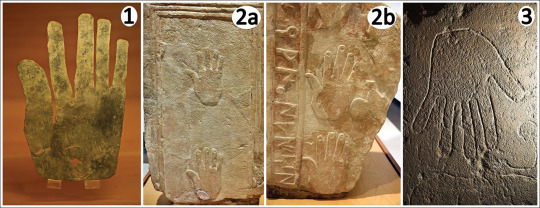
Also, and weird as it may be, the inscriptions found on these hands are on the back and not on the palm, so the hand of Irulegi just follows this tradition:

As to why right hand = good, we can only speculate. Probably because most people are right-handed and it was regarded as the hand necessary to do almost everything: most importantly, wield a weapon, but also to create art for the deities, feed the babies, cut the wheat, etc.
#euskal herria#basque country#pays basque#pais vasco#euskadi#culture#history#hand of irulegi#hands#irulegijo eskua#archaeology#iberian people#vascon people#anons
12 notes
·
View notes
Text
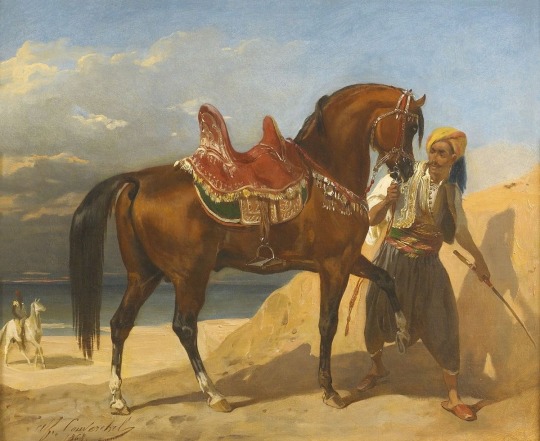
🌞
10 notes
·
View notes
Text
Learning Ladino
Ladino, also referred to as Judeo-Spanish or Judezmo, serves as the linguistic heritage of Sephardic Jews, or Sepharadim, descending from the Iberian Peninsula, which encompasses present-day Spain and Portugal. Following their expulsion from Spain in 1492, Sepharadim dispersed throughout the Mediterranean, the Middle East, and beyond, predominantly finding refuge in the Ottoman Empire. It was within this diverse cultural milieu that Ladino emerged, blending Spanish and other Iberian languages with a robust infusion of Hebrew-Aramaic elements, while also incorporating linguistic influences from the surrounding Mediterranean regions such as Turkish, Greek, Italian, French, and Arabic. Embracing versatility, Ladino became the language of everyday life, spanning from domestic settings to public spaces like markets and synagogues, and encompassing various aspects of culture including humor, politics, and literature.

#Ladino#Sephardic#Jewish Heritage#Language Revival#Sephardic Culture#Iberian Legacy#Mediterranean Influence#LinguisticDiversity#Cultural Heritage#Jewish Language#Sephardic Tradition#Ottoman Empire#Language Preservation#Jewish Diaspora#Multilingualism#Heritage Language#Historical Linguistics#Cultural Identity#Sephardic Studies#Language History
9 notes
·
View notes
Text
Time Travel Question : Medievalish 2
These Questions are the result of suggestions from the previous iteration.
This category may include suggestions made too late to fall into the correct earlier time grouping. Basically, I'd already moved on to human history, but I'd periodically get a pre-homin suggestion, hence the occasional random item waaay out of it's time period, rather than reopen the category.
In some cases a culture lasted a really long time and I grouped them by whether it was likely the later or earlier grouping made the most sense with the information I had. (Invention ofs tend to fall in an earlier grouping if it's still open. Ones that imply height of or just before something tend to get grouped later, but not always. Sometimes I'll split two different things from the same culture into different polls because they involve separate research goals or the like).
Please add new suggestions below if you have them for future consideration. All cultures and time periods welcome.
#Time Travel#Taino#Indigenous History#Tenochtitlan#Irish History#Connacht#Aztecs#Tikal#Maya#Caribbean History#Cuba History#Chimor#History of Textiles#History of the Americas#Rus#History of Religion#Komi#Toltecs#Iberian Peninsula#Bavaria
76 notes
·
View notes
Text
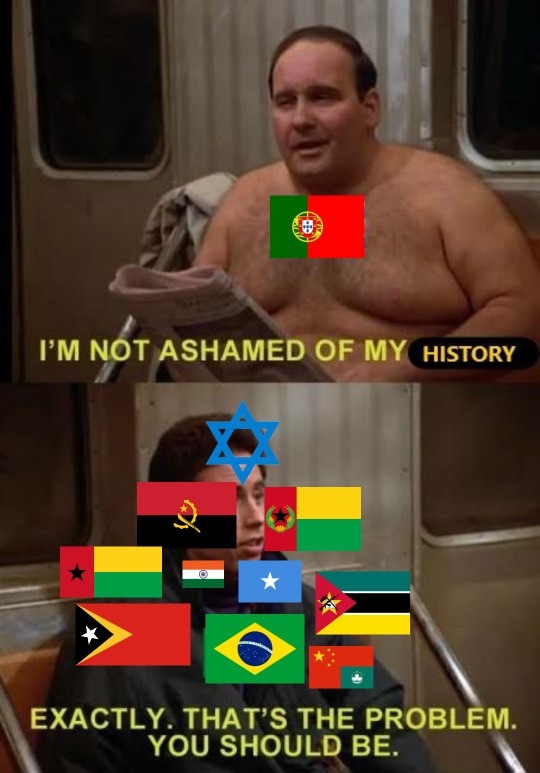
#meme#history memes#portugal#brazil#angola#west timor#somalia#india#macau#mozambique#guinea-bissau#jews#history of colonialism#iberian peninsula
54 notes
·
View notes
Text
ORDOÑO III
King of León
(born c. 926 - died 956)

pictured above is an imagined portrait of the King of León, by Isidoro Lozano from 1852
-------------------- ~ -------------------- ~ --------------------
SERIES - Descendants of the Kings of Asturias: Ordoño was a great-grandson of Alfonsu III, King of Asturias from 866. Some sources consider that his grandfather Ordoñu II, King of León was also King of Asturias from 914, although ruling from León.
-------------------- ~ -------------------- ~ --------------------
ORDOÑO was born around 926, somewhere at the Kingdom of León. He was the second son of Infante Ramiro of León and his first wife Adosinda Gutiérrez. As at the time of his birth his father may have already been the ruler of the County of Portugal he could have been born there.
He was a member of the Ordóñez Dynasty branch of the ASTUR-LEONESE DYNASTY and was named ORDOÑO RAMÍREZ, meaning Ordõno son of Ramiro.
In the 930s a lot happened in his life. By 930 his father probably reputiaded his mother. While in 931 his father succeeded as Ramiro II, King of León and he became an INFANTE OF LEÓN. And around 932-34 his father remarried to Urraka Santxitz of Pamplona.
Around 944 he marrried URRACA, of Castilian nobility. She was a niece of his stepmother as one of the daughters of Fernán González, Count of Castile and Antsa Santxitz of Pamplona. They possibly had one son.
Very little is known about his life before his father's death in 951, when he succeeded as ORDOÑO III, KING OF LEÓN because his older brother was already dead.
Though his succession was challenged by his younger half-brother Infante Sancho with the support of the Count of Castile and the Kingdom of Pamplona.
So some sources believe that because his father-in-law the Count of Castile supported his half-brother's claim over his own he reputiaded his wife around 952-53.
As it is believed that his only son was born during the period in which he was separated from Urraca, some sources believe that the mother of this child could have been an unrecorded second wife or a mistress.
Trying to work out a plausible maternal ancestry for his son, some sources believe that the mother of this child could have been a certain ELVIRA, one of the daughters of Pelayo González, Count of Deza and Hermesinda Guterrez.
But as these speculations clash out with his recorded wife having been mentioned again in charters from June 954, it is believed that he probably reconciled to Urraca before that.
Hence there are no consensus over who was the real mother of his only child or if he was legitimate or illegitimate.
It is believed that he could have probably reconciled with his wife do to the Count of Castile having changed sides and having began to support his claim over the throne.
At the beginning of his reign he also had to endure internal rebellions and Muslim attacks, but succeeded in signing a truce with the Muslims from the Caliphate of Córdoba.
Also during his reign the Kingdom of León continued to have problems with the growing power independence of the County of Castile and he ended up briefly making piece with his father-in-law.
The King of León died in Zamora, in 956, probably already in his thirties.
-------------------- ~ -------------------- ~ --------------------
After he died his half-brother could finally become King Sancho I, as the uncontested Monarch of León, probably because his only son was still a child.
However, around 958 his half-brother was deposed and King Ordoño III's widow was married by her father to the new King Ordoño IV (a cousin of King Ordoño III). Not long after, she would also end up becoming a Queen Consort of Pamplona through her third marriage to King Antso II.
By 985 his only son could finally inherit the Kingdom as Bermudo II, King of León. And it is through his son that all subsequent Monarchs of León and Spain are his descendants, and also all Monarchs of Castile since 1065.
-------------------- ~ -------------------- ~ --------------------
Check my posts about ORDOÑO III's family, his Royal House and his connections to the Kings of Asturias!
ORDOÑO III had one child... either legitimate or illegitimate
With his wife URRACA, an unrecorded second wife or a mistress...
Bermudo II, King of León - husband first (possibly) of Velasquita and second of Elvira of Castile.
He was born a member of the Ordóñez Dynasty branch line of the Astur-Leonese Dynasty.
In a span of four generations, ORDOÑO III was related to the Kings of Asturias through his father…
His father was Ramiro II, King of León.
His grandfather was Ordoñu II, King of León - possibly the King of Asturias between 914-24.
His great-grandfather was Alfonsu III, King of Asturias - the King of Asturias between 866-910.
#ordoño iii#king of león#middle ages#medieval spain#medieval europe#astur leonese dynasty#royals#royalty#monarchy#monarchies#asturian royalty#spanish royals#royal history#asturian history#spanish history#iberian history#european history#world history#history#reconquista#10th century#history with laura
2 notes
·
View notes
Text
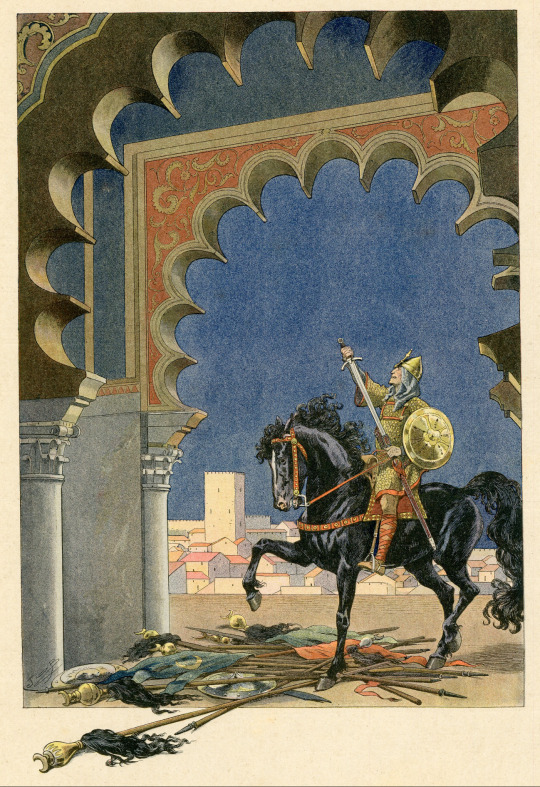
#jacques onfroy de bréville#job#art#illustration#spain#reconquista#el cid#el cid campeador#knights#knight#crusade#crusades#crusader#spanish#hispania#iberia#iberian peninsula#history#medieval#middle ages#chivalry#sword#europe#european#christianity#christian#christendom#mediaeval#reconquest#españa
170 notes
·
View notes
Photo

Un dia en Porto... by Edorta Kartiber On-Off.
#edortakartiber#bridgeofponteluisiinporto#bridge#river#europe#iberian#peninsula#north#region#oporto#porto#district#portugal#ancient#architecture#art#civil#historical#history#infrastructure#iron#metal#monument#old#neighborhood#transport#roof#tradition#traditional#typical
17 notes
·
View notes
Photo

Juan Pantoja de la Cruz (Spanish. 1553 - 1608)
Ana de Velasco y Girón, Duchess of Braganza, at 18 in 1603
#juan pantoja de la cruz#spanish#spain#espana#ana de velasco#ana de velasco y giron#history#duchess of braganza#western civilization#arts#fine art#fine arts#oil painting#duchess#classical art#traditional art#court#court painting#iberia#iberian#Iberian Peninsula#european#europe#europa#european art#noble#nobility#nobles#art#spanish people
733 notes
·
View notes